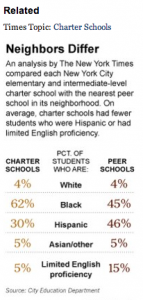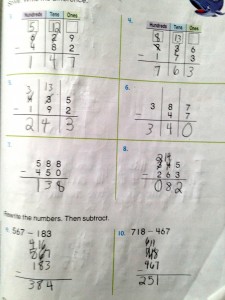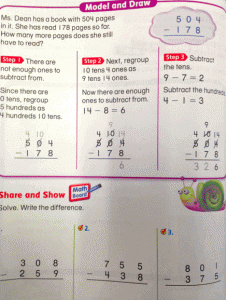There’s an old joke that if you put two Jews in a room to debate a question, they’ll inevitably emerge with three opinions. This comes about from the fact that Judaism is based on an ancient text written in an extinct language which, depending on whom you ask, could be the literal word of a divine being, or the work of a single author inspired by this divine being, or, as archaeologists have shown, is the work of several authors, which was then compiled over several centuries until it emerged in its current form. This document, which is known the as the Torah, despite its age and mysterious origins, remains one of the central texts of Western civilization.
I am fairly serious about being Jewish, but this does not blind me to the eccentricities and downright nastiness of the Torah. It has elements of originality, lyricism and beauty, while at the same time being furiously murky and downright politically incorrect. On one hand, it can wax lyrically about the glories of the divine spirit, while at other times it can be downright racist, sexist and bigoted (I don’t know what the Hittites and Amorites did to arouse the ire of whomever compiled the Torah, but it must have been over something more innocuous than splitting the check at an ancient Chinese restaurant on a Sunday night….)
The most interesting thing about studying Torah is the lack of agreement on what the meaning and intent of any specific passage may be. This has led to thousands of years of discussions by millions of people, a small portion of which have been collected into such works as the Talmud, which is a record of the great rabbis’ interpretation of what this incredibly dense and puzzling document may be. This being a religious text, there is no “author” to ask for a definitive answer (although there is a comical anecdote where a rabbi makes a tree fly across the yard to prove his particular version of correctness), but that’s hardly the point: the Torah engages us because nobody has the final word. In the end, we read and interpret Torah to enrich our lives and develop new insights into the nature of spirituality.
Which brings me to the Common Core State Standards. Say what you will about how they were presented unto us as a gift from a different kind of “presence” (and whether anyone would regard Bill’ionaire’ Gates as “divine” is beyond my imagination), they are incredibly dry and dense in way that one wishes for some kind of hermeneutic laxative to calm the mental spasms one gets from reading them. Interpreting and implementing these standards has become a very profitable industry because the stakes are so high: failure to follow the Common Core chapter and verse could lead to low test scores, the firing of a teacher and the closing down of a school. Oh, and no doubt there are consequences to the student as well, but his/her welfare seems to be far down that list.
So what are we to make of this section of the CCSS in 2nd grade?
2NBT 5: Add and subtract within 1000, using concrete models or drawings and strategies based on place value, properties of operations, and/or the relationship between addition and subtraction; relate the strategy to a written method. Understand that in adding or subtracting three- digit numbers, one adds or subtracts hundreds and hundreds, tens and tens, ones and ones; and sometimes it is necessary to compose or decompose tens or hundreds.
I’ll state my question clearly: does this mean that 2nd grade teachers should be taught the “standard algorithm” for adding and subtracting three-digit numbers? Inquiring minds want to know!
As is the case with many things related to the Common Core, “clear and definitive answers are hard to come by.” From what transpired when I asked this question of my colleagues, nobody will commit to a specific answer, because a) nobody really knows; b) nobody is in agreement; c) everybody is trying to protect their asses; d) Common Core? How about “Common Bore?”
A representative from Houghton Mifflin, publishers of Go Math!, which devotes an entire chapter in the 2nd grade curriculum to teaching and practicing the “standard algorithm” for adding and subtracting 3 digit numbers, gave me her interpretation, which would leave a Torah scholar incredulous at its astonishing leaps of logic, and perhaps faith:
Dear Mr. Berkman,
I was forwarded an e-mail containing your question on the use of algorithms in the Grade 2 GO Math! program.
In order to prepare my response I went back and carefully reread the explanation of the Grade 2 content standards included in the Critical Area description – p. 17 of the CCSS – as Critical Area 2 was instrumental to our approach around addition and subtraction algorithms:
“In Grade 2, instructional time should focus on four critical areas: (1) extending understanding of base-ten notation; (2) building fluency with addition and subtraction; (3) using standard units of measure; and (4) describing and analyzing shapes.”
“(2) Students use their understanding of addition to develop fluency with addition and subtraction within 100.
They solve problems within 1000 by applying their understanding of models for addition and subtraction and they develop, discuss, and use efficient, accurate, and generalizable methods to compute sums and differences of whole numbers in base-ten notation, using their understanding of place value and the properties of operations. They select and accurately apply methods that are appropriate for the context and the numbers involved to mentally calculate sums and differences for numbers with only tens or only hundreds.”
If one only reads CCSS 2.NBT.7, it is possible to conclude that the standard algorithm is not required.
However, by looking at the Critical Area description, and 2NBT.5, we believe (emphasis mine) it is clear the standard algorithm is expected for two-digit addition and subtraction, as this is what is meant by “fluency with addition and subtraction within 100.” The Common Core expects a conceptual approach to developing the standard algorithm by making use of the base-ten system and properties. This is precisely what is done in lesson 4.1 (break apart ones to add — uses pictures), 4.2 (make a ten — uses drawings and base-ten materials), 4.3 (break apart addends as tens and ones — uses drawings), 4.4 (model regrouping with base-ten materials), 4.5 (modeling and recording 2-digit addition — again, using drawings and base-ten materials to connect to standard algorithm), 4.6 continues to use drawings and base-ten models, only beginning in 4.7 do students actually begin to practice the use of the algorithm. A parallel approach in conceptual development is utilized for subtraction. In Chapter 6 we address standard 2.NBT.7 as outlined in the standards. By eventually using the standard algorithm in Chapter 6, we are reinforcing 2NBT.5. Our authors believe this fluency is required in order to properly prepare students for grade 3 so they can focus on multiplication and division. This approach is further supported by the critical area statement that students “develop, discuss, and use efficient, accurate, and generalizable methods to compute sums and differences of whole numbers in base-ten notation, using their understanding of place value and the properties of operations.”
The standard algorithm is a generalizable method to compute sums and differences, and our approach is based on understanding of place value.
I hope this information is helpful.
Regards.
Mary Connolly
What constitutes a “generalizable” method is open to discussion, if you get my drift. Yes, the “standard algorithm” is a “generalizable method,” but so are drawing diagrams and modeling with base ten blocks. There are many generalizable ways to solve an addition and subtraction problem, but there is only one “standard algorithm” (although who “standardized” this algorithm is one for the educational historians.) I’ll say it again, but this time in bold type: The word algorithm does not appear until the third grade standards. Was this by intention or oversight? What did the “creators” of this document intend?
Unlike the Torah (which, I am given to understand, lacks a bibliography) the Common Core State Standards were written by humans who, presumably, are still alive and well. Surely the person who wrote this standard and the committee which approved it had a specific idea in mind, and I believe the specific idea is that the “standard algorithm” for adding and subtracting three digit numbers would not be taught until 3rd grade. I’ll go even further: based on this footnote in 3.NBT.A.2, the authors clearly state “a range of algorithms may be used” for multi-digit computation. That is, they do not acknowledge or endorse a “standard algorithm” at any point.
It is more than likely is that this may have nothing to do with what the actual authors of Go Math! intended. The alleged “author” of this chapter was evasive when I brought up the subject of algorithms, hedging her bets by stating “I am not concerned by the labeling; it could very well be called a procedure or process. I think what is important is our intent for children’s learning.” ” What was that intent?” I responded. No response.
Based on my research and conversations, my only conclusion is that the three-digit addition and subtraction algorithms were written into the 2nd grade Go Math! curriculum to placate those who believe the CCSS are not rigorous enough. If you’ve been around awhile, you know that curriculum adoptions are ultimately less about educational appropriateness and more about political appeasement.
The prevarication I’ve encountered leads me to believe that the marketing people at Houghton-Mifflin decided that it would be economically expedient to include content that was clearly out of line with the standards in order to lure in those who demand a traditional form of mathematics instruction. By defiling the standards to bloat their profit sheets, Houghton Mifflin has shown us that while the Common Core State Standards were “supposed” to change everything, it’s really “business as usual” for the big publishers.









